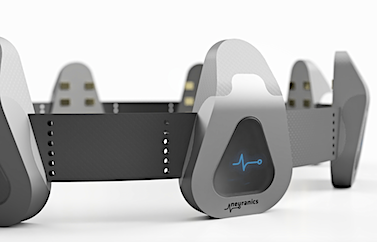Glasgow-based Neuranics said it has secured an £800,000 grant from Scottish Enterprise (SE) to support a £2.4 million project aimed at transforming how humans interact with machines through innovative wristband technology.
Using Neuranics’ patented magnetic sensors, the wristbands will detect muscle activity and precise gestures.
This 18-month project will create 10 high-tech jobs at the company’s Glasgow headquarters and solidify Scotland’s position as a leader in wearable technology.
Neuranics, a spin-out from the Universities of Glasgow and Edinburgh, specialises in high-precision magnetic sensor solutions. The company leverages MMG technology to revolutionise human-machine interactions across sectors like healthcare, gamin and XR (extended reality).
“The wristbands, leveraging magnetomyography (MMG) technology and machine learning, will interpret muscle movements through soft bands worn on the arms,” said Neuranics.
“Initially targeting extended reality (XR) applications, the device will enable seamless gesture recognition for immersive digital experiences …
“Current gesture recognition solutions often lack accuracy and rely on bulky, uncomfortable equipment. Neuranics’ solution addresses these limitations with compact sensors capable of detecting the smallest muscle-generated magnetic fields.
“These wristbands will provide users with a comfortable, unobtrusive way to continuously monitor muscle activity …
“While initially focused on XR platforms, the MMG wristband has potential in various industries.
“In healthcare, it could improve prosthetic control through real-time rehabilitation feedback. In sports, the device may help athletes monitor muscle activity to optimise training.
“The wristband unlocks huge possibilities for gaming and assistive technology, enabling hands-free control for improved accessibility, as well as facilitating natural, gesture-based interactions in virtual environments.”
Neuranics CEO Noel McKenna said: “This funding is a tremendous boost for our project. We are excited to explore how our technology can transform digital interactions and contribute to Scotland’s economic and technological landscape.”
